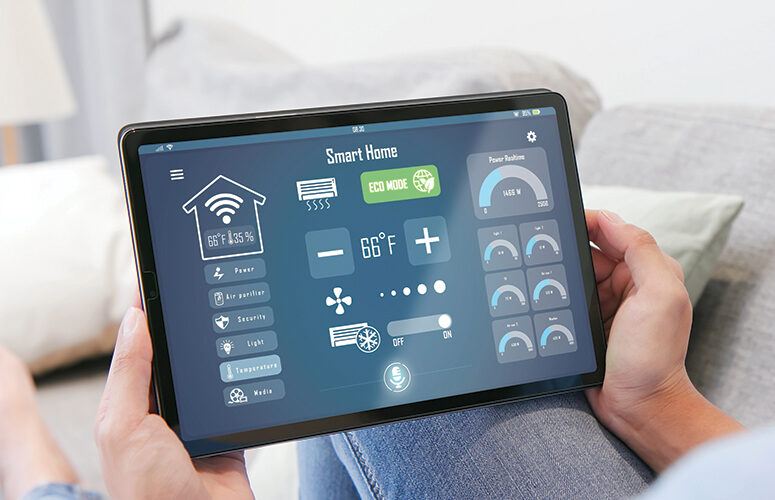
Cutting-Edge Energy Solutions
As the Garden State implements more renewable energy sources, energy providers are developing new technologies and initiatives to meet the state’s ambitious clean energy goals.
By Jennifer Lesser, Contributing Writer On Jun 12, 2023When it comes to electric delivery and generation, New Jersey’s energy utilities have been hard at work implementing technological advancements that help provide customers with solutions for everything from improved energy efficiency and cost-effectiveness to resiliency and sustainability. Meanwhile, organizations like the New Jersey Board of Public Utilities (NJBPU) are also striving to help both businesses and homeowners alike implement these new technologies; not only to conserve energy, but ultimately to make the transition to renewable sources of energy like solar and wind.
When it comes to innovation, many of the state’s energy providers remain focused on efficiency. “The cheapest and cleanest forms of energy are the ones that we don’t actually use. Businesses need to look into energy-efficient options because not only can they help save the environment, but because they also can drastically reduce their energy bills,” says Kelly Mooij, director of the NJBPU’s Division of Clean Energy. “We partner with utilities to help educate folks on energy-efficiency initiatives and what they can do to save money. There are tons of programs available where they can make upgrades and even qualify for incentives to pay for those upgrades.” She notes that some common options for businesses and homeowners include home energy audits, HVAC upgrades and switching to LED lighting.
Ahmed Mousa, PSE&G’s utility of the future manager, notes that PSE&G’s energy audits and smart meters are also designed to provide intelligence about each customer in order to devise tools and tips on saving money.
“From the perspective of our customers, it’s all about safety, reliability and resilience. It’s our job to make sure our customers are always protected,” he says.
The NJBPU has also continued to focus on helping customers take advantage of more significant clean energy initiatives, as evidenced by its Community Solar Program, which allows those who rent, live in an apartment or multi-family building and/or lack control of their roof – or can’t afford the cost of a solar installation – to benefit from the cost savings and reduced carbon footprint of solar power.
“The program was designed to bring clean energy into underserved communities, because it’s going to take all of us working together as a society to help mitigate the effects of climate change. This is the challenge of our time and what we’re going to be judged on by future generations,” says Joseph L. Fiordaliso, NJBPU president.
According to Mooij, the first two years of the pilot program have been successful, and there is now a proposal for a permanent Community Solar program in New Jersey.
Chris Hoenig, spokesman for JCP&L, agrees that advancements in clean energy technology are making solar- and wind-powered generation more affordable. “While JCP&L is an electric distribution company and not a generation company, these advances are important for us as we look for more creative ways to inject this additional energy into the grid,” he says.
PSE&G is also prioritizing opportunities to help its customers take advantage of solar energy. “We take great pride in giving the green light to every residential customer to add solar,” Mousa says, noting that the company already has programs to support solar power, energy efficiency initiatives, as well as electric vehicles, and has plans to roll out additional initiatives, such as energy storage, in the near future.
The NJBPU has also been focusing on initiatives to address emissions and reduce the amount of carbon in the air – especially since some 40% comes from transportation, Fiordaliso notes. That means greater awareness of and access to electric vehicles. “The more electric and hybrid cars we can get on the road, the easier it will be to reduce our carbon footprint,” he says, noting that the BPU is also working with sister agencies to ensure the state ultimately has enough charging stations to support its efforts.
Mousa agrees that electrification is one of the key areas for innovation in the state today. “Our customers want electric vehicles and larger companies like UPS or Amazon are also wanting to update to electric trucks, so we’re focusing on the technological advancements that are necessary to make it seamless for the customer as well as how we can manage this shift in a cost-effective way,” he explains.
Then there are the upgrades utility companies are making to their current electrical systems. According to Hoenig, one major innovation is smart grid technology, which enhances reliability and offers customers more control over their electric consumption. “This includes automated technology installed along the lines that reduce the number of customers affected by an outage, equipment that allows for remote switching by our control centers, and smart meters that will provide detailed information to customers,” he explains.
With the installation of smart meters, customers have access to more detailed energy information through JCP&L’s online Home Energy Analyzer tool, which helps them better understand their electricity use, and manage and control their electricity consumption.
In 2019, JCP&L also began installing “TripSaver” automatic reclosing devices as part of its Reliability Plus infrastructure investment program to improve the grid and enhance reliability. “These devices are installed along local neighborhood electric lines and act much like a circuit breaker in your home,” Hoenig explains. “When there’s a temporary issue on the line – such a tree limb bumping the wire – the TripSaver responds in seconds, shutting off the flow of electricity to that section of the line.”
The devices will then automatically reenergize the line when the temporary interruption resolves to keep electricity safely flowing to customers. Through the end of 2021, TripSavers and advanced automation technology have prevented more than 3.2 million minutes of cumulative customer outages.
Of course, it’s impossible to talk about advancements in energy without discussing the great strides being made towards wind energy, which has been making headlines in recent months due to Gov. Phil Murphy’s ambitious renewable energy goals.
According to Maddy Urbish, head of government affairs in New Jersey and market strategy for Ørsted, the company’s Ocean Wind 1 project will be New Jersey’s first offshore wind farm. “At 1,100 megawatts, the project will produce enough clean electricity to power half a million homes and businesses,” she says. “As one of three projects awarded by the state, Ocean Wind 1 has committed to $695 million of in-state spending, creating hundreds of local construction jobs as well as long-term, permanent jobs at a new operations and maintenance facility in Atlantic City.”
Located 15 miles off the coast of southern New Jersey, the project’s 98 wind turbines and three offshore substations will connect to the electrical grid via three transmission cables. The project proposes to have one of these cables make landfall in Ocean City and the other two cables are proposed to make landfall at Island Beach State Park, with an interconnection point near the former Oyster Creek nuclear facility. Construction is likely to begin later this year and Ocean Wind 1 is expected to provide first power in late 2024.
“Offshore wind plays a critical role in the transition to clean energy. Gov. Murphy’s [renewable energy goals] include 11 gigawatts of offshore wind by 2040 and 100% renewable energy by 2035,” Urbish adds. “To meet these goals, the offshore wind industry is investing heavily in New Jersey to create a long-term, sustainable and equitable industry that will encourage job creation and spur growth in the local and regional economies.”
To access more business news, visit NJB News Now.
Related Articles:





